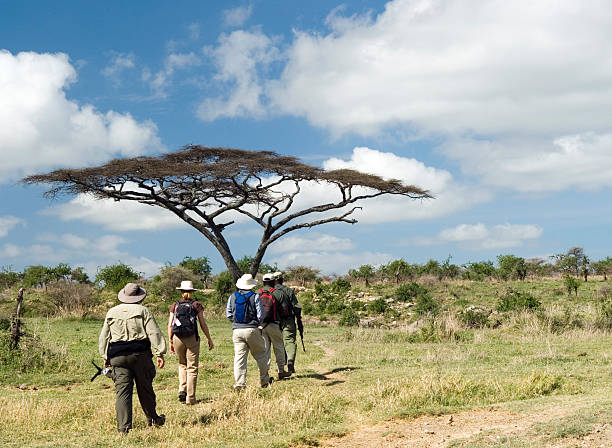Unmasking the Charm and Appeal of Glamping: A Modern Take on Traditional Camping
In the ever-evolving world of travel, it's evident that people are constantly seeking new and unique ways to experience the world. One such trend that is rapidly gaining traction is glamping, a luxury-infused version of traditional camping. This article will delve into the origins, current trends, and practical implications of glamping, providing an in-depth analysis of this travel trend that is transforming the way people connect with nature.

Glamping: A Historical Overview and Key Developments
Contrary to what many might assume, the concept of glamping isn’t a 21st-century invention. The term glamping, a combination of ‘glamorous’ and ‘camping’, emerged in the early 2000s. However, the idea of comfortable and luxurious outdoor living predates this by centuries. Historically, explorers and military campaigns delivered comfort to the wilderness, with well-furnished, spacious tents and high-quality food and drink.
Fast forward to today, glamping has morphed into a global phenomenon. The rise of this trend can be attributed to an increased desire for eco-friendly travel options and the need to escape from the digital world and reconnect with nature, albeit comfortably.
Current Glamping Trends: Merging Luxury with Nature
The glamping industry has witnessed significant innovation in recent years. From treehouses, yurts, and tipis to eco-pods, converted barns, and even transparent bubble domes, glamping accommodations are as diverse as they are unique. These structures often come equipped with modern amenities such as hot tubs, fire pits, Wi-Fi, and plush bedding, offering a perfect blend of luxury and nature.
Glamping locations are equally varied, ranging from secluded forests and tranquil lakesides to picturesque vineyards and even the heart of bustling cities. This flexibility allows glampers to tailor their experiences to personal preferences, whether they seek solitude, adventure, or urban exploration.
The Pros and Cons of Glamping
Like any travel trend, glamping comes with its advantages and challenges. The most apparent benefit is the comfort factor. Glamping eliminates the inconveniences associated with traditional camping, such as pitching tents or cooking over a fire, making it an appealing option for those who enjoy nature but not the complications of outdoor living.
However, glamping can be more costly than regular camping due to the luxurious amenities it provides. Additionally, popular glamping sites may be booked months in advance, requiring travelers to plan their trips well ahead.
Enlightening Glamping Facts and Tips
- Glamping caters to a wide demographic, from families and couples to groups of friends and solo travelers.
- Glamping sites often have eco-friendly features, like solar power and composting toilets.
- Research and book in advance to secure the best glamping spots during peak travel seasons.
- Pack appropriately for the environment you’ll be glamping in, but remember you’re not roughing it—leave the camping gear at home!
Wrapping Up: The Glamping Phenomenon
In conclusion, glamping is redefining the way people approach nature-based vacations. By merging comfort with outdoor living, it offers an exceptional travel experience that allows individuals to luxuriate in the wilderness without sacrificing their home comforts. As with any travel trend, it’s essential to research and plan accordingly to make the most out of your glamping adventure. As this trend continues to evolve, it will undoubtedly continue to shape the future of travel and outdoor recreation.





